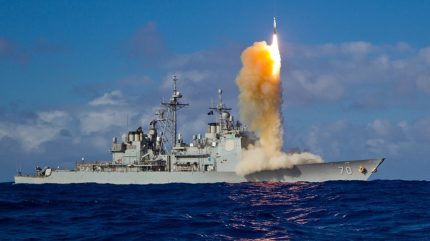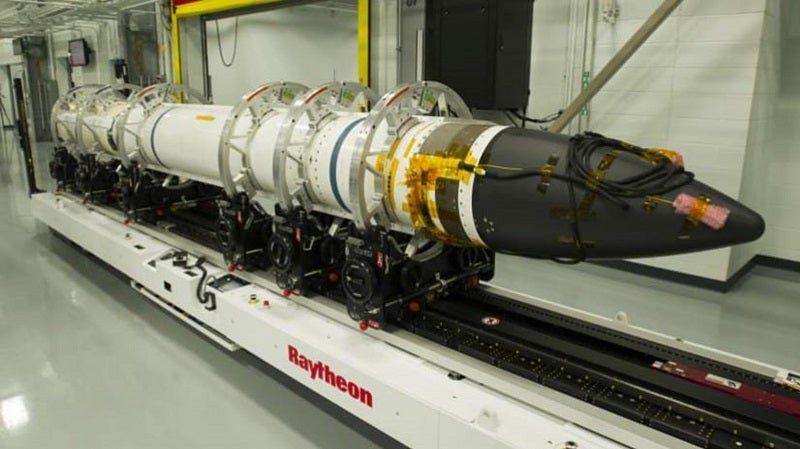
The US Department of Defense (DoD) has awarded Raytheon, an RTX subsidiary, a $2bn contract to manufacture and assemble Standard Missile-3 (SM-3) Block IIA all-up-round interceptors for the US and Japanese navies.
Japan will allocate $308.4m (Y47.5bn) in Foreign Military Sales (FMS) funds. The work will be performed in Tucson, Arizona; and Huntsville, Alabama, with an expected completion date of 28 February 2031.

Discover B2B Marketing That Performs
Combine business intelligence and editorial excellence to reach engaged professionals across 36 leading media platforms.
The SM-3 is a defensive weapon the US Navy uses to destroy short- to intermediate-range ballistic missiles. The interceptor uses sheer force, rather than an explosive warhead, to destroy its target. Its “kill vehicle” hits threats with the force of a 10-ton truck traveling at 600 miles per hour. This technique, referred to as “hit-to-kill,” has been likened to intercepting a bullet with another bullet, stated the supplier.
In cooperation with Japan, Raytheon is developing the next-generation Block IIA variant, which was first tested in 2017, in contrast to the US-produced Block IB unit, which was first launched from an Aegis Ashore testing site in 2014.
IIA has two distinct features: larger rocket motors that will allow it to defend broader areas from ballistic missile threats and a larger kinetic warhead.
Its kinetic warhead has been enhanced, improving the search, discrimination, acquisition and tracking functions, to address advanced and emerging threats.

US Tariffs are shifting - will you react or anticipate?
Don’t let policy changes catch you off guard. Stay proactive with real-time data and expert analysis.
By GlobalData
Block IIA is the centerpiece of the European missile defence system. It will be deployed ashore in Poland to complete Phase 3 of the European Phased Adaptive Approach.
This US facility was opened for the first time following Nato’s Washington summit in early July 2024. It is the second base of its kind within a wider Nato air defence network. Its sister opened in 2016 and is situated in the town of Deveselu, southern Romania, approximately 1,880 kilometres away.
Kitting out Japanese Aegis systems
Currently the US DoD have been supporting the Japanese Maritime Self-Defense Force in developing two Aegis equipped destroyers since 2019 at an estimated cost of Y1trn ($7.1bn).
Although there was a major delay in 2020, this FMS case – designated ‘JA-P-NCO’ by the DoD – will continue with construction due to begin this year, according to GlobalData intelligence.
Lockheed Martin originally manufactured the Aegis ballistic missile defence capability for US Navy Arleigh Burke-class destroyers to engage ballistic missile threats with the SM-3.
Some 33 Arleigh Burkes were fitted with the system, which offers long-range surveillance, tracking, and engagement of short-range and medium-range ballistic missiles.





